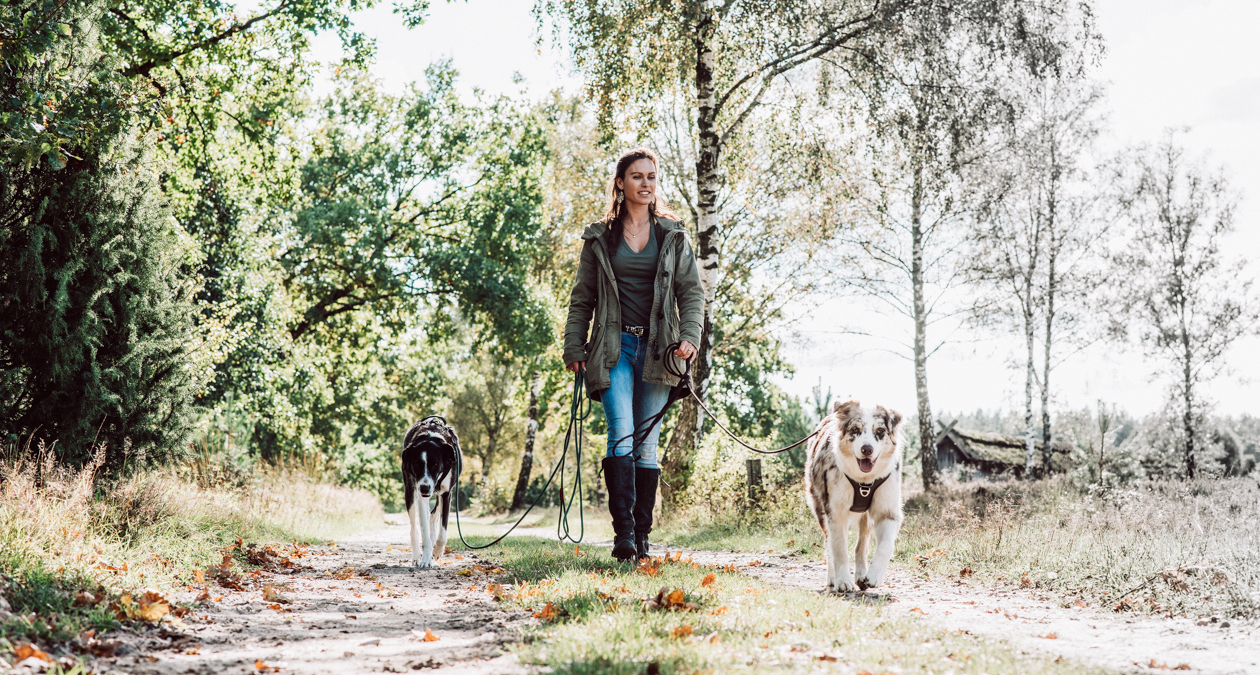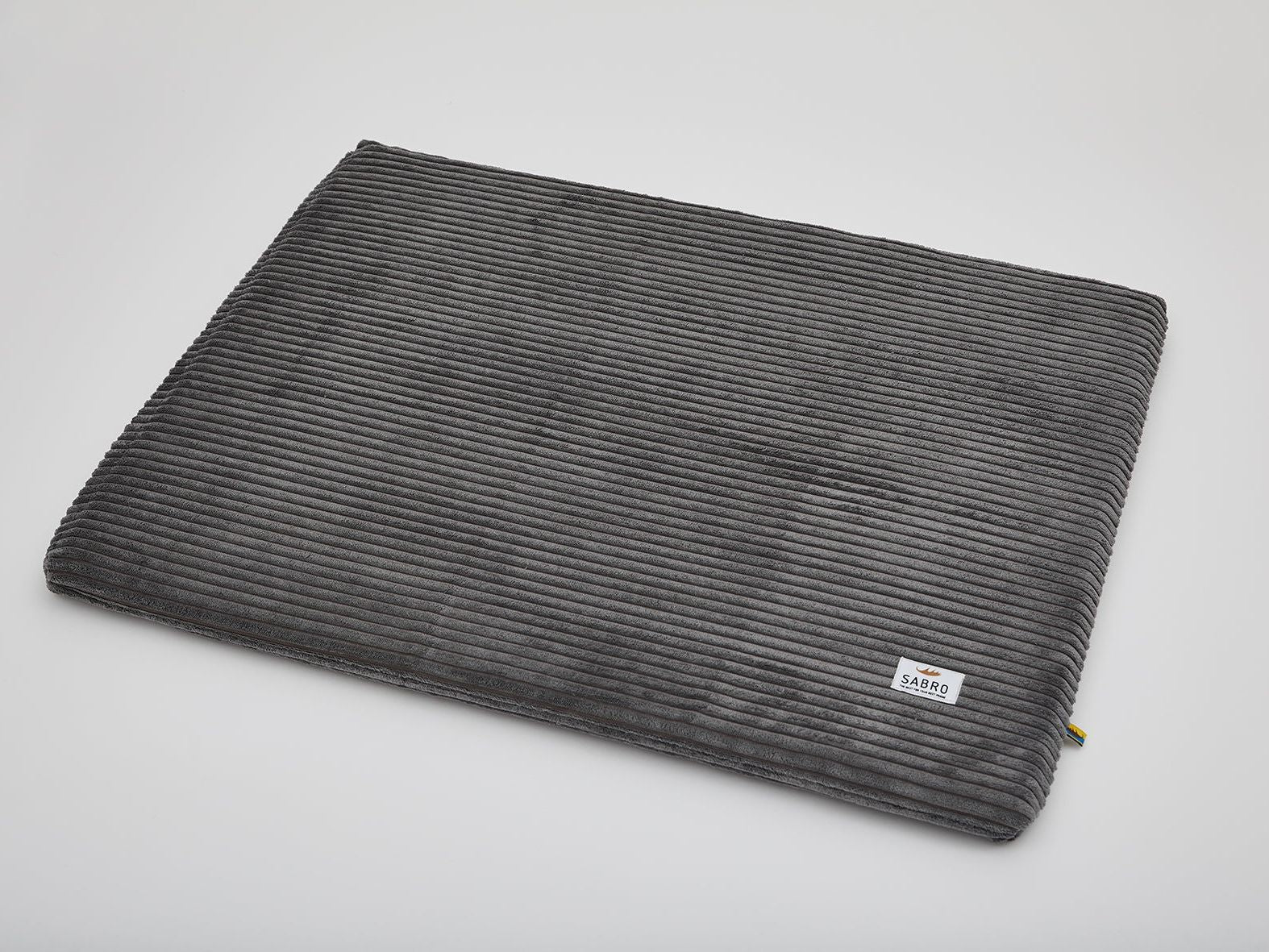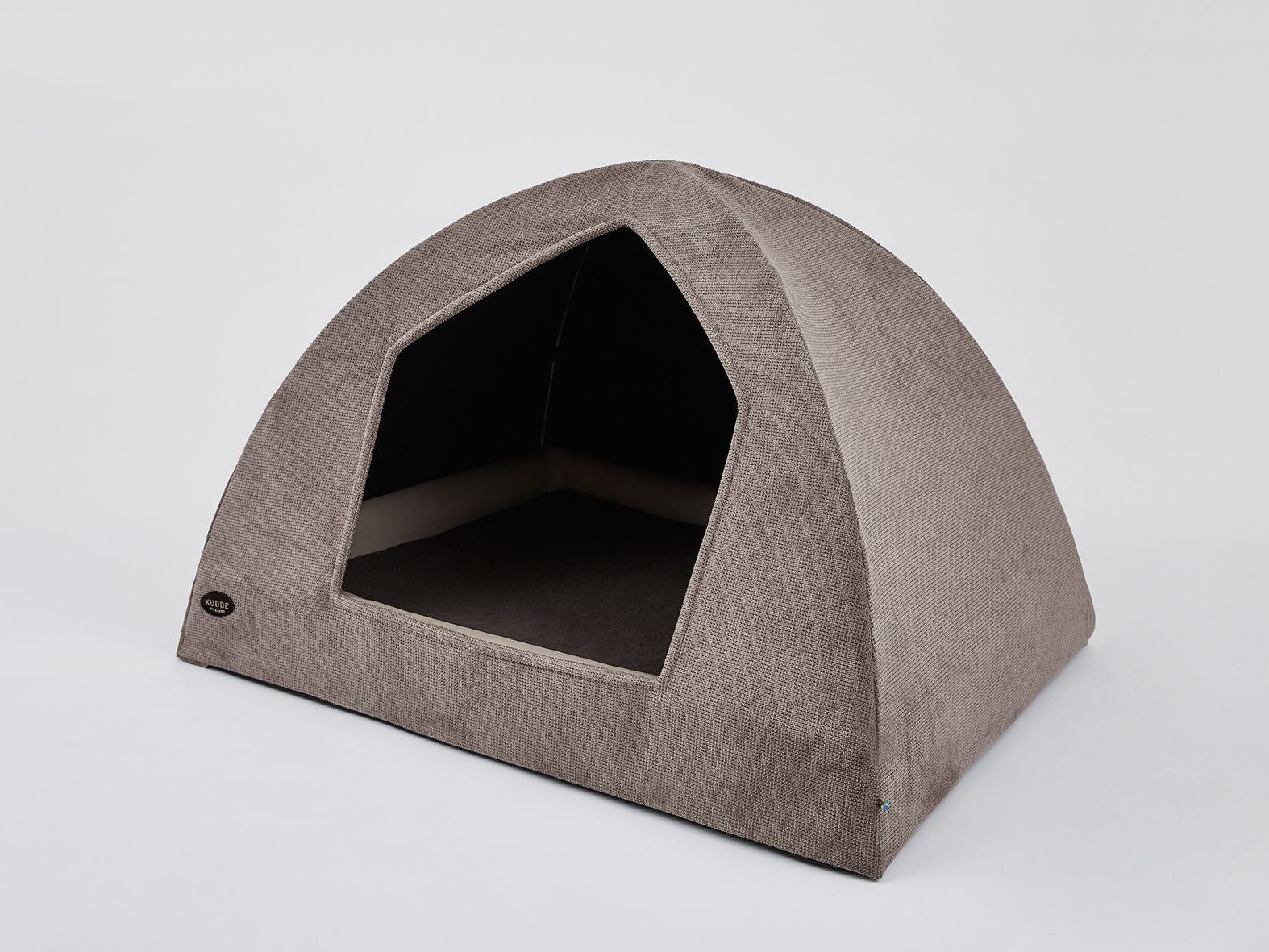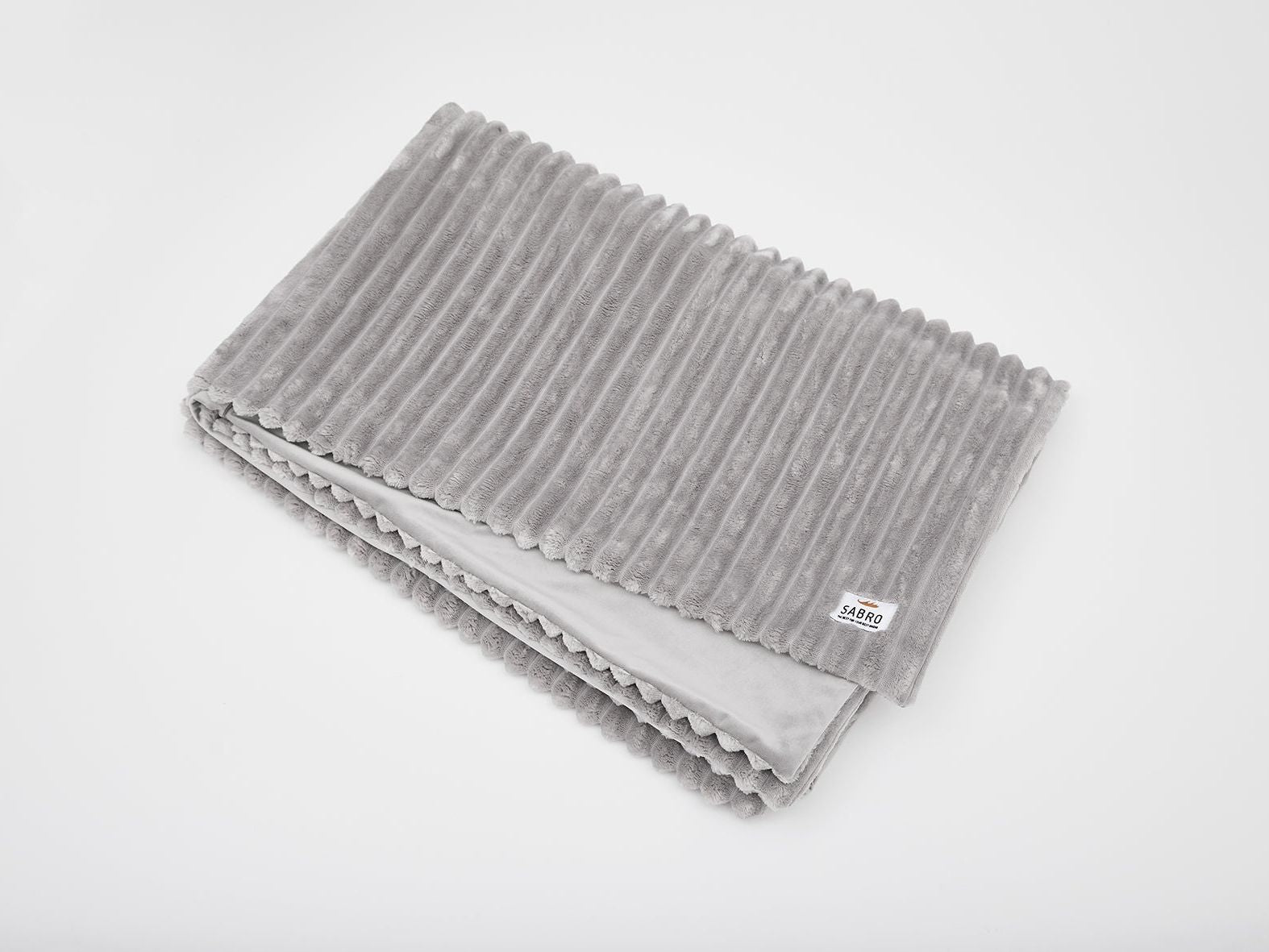If your dog is constantly pulling on the lead, it can not only be very tiring and annoying, but sometimes also dangerous. In the worst case scenario, you could end up in physiotherapy with a dislocated shoulder or your four-legged friend could end up crushing their windpipe with the collar due to pulling on the lead. Either way, these are not rosy prospects: It is therefore advisable to stop pulling on the lead as soon as possible and improve your own lead handling skills.
We give you possible reasons for pulling on the lead and give you valuable tips and exercises on how you can change your four-legged friend's behavior and make walking your dog a pleasure again.
Why your dog pulls on the lead - the reasons
Basically, walking "at heel" is not necessarily a natural behavior for a dog, because as freedom-loving animals they are more interested in moving around in their territory. We dog owners know that they would love to sniff, romp and play everywhere - while making several scent marks at the same time. That's why you need to teach your furry friend to walk on a lead first.
Often our attitude as owners can also be to blame for the fact that walking on a lead becomes a torture for our four-legged friends. In other words, if you see walking as an agenda item that you stubbornly work through, your dog will realize that you don't enjoy it. A lack of interaction through games can also cause your dog to develop a mind of its own and drag you around on the lead.
In addition to these reasons, the following things can also be responsible for your dog pulling on the lead:
- Leash too short: First check the length of the lead, because if it is too short, your four-legged friend will inevitably pull on the lead when you take a few steps forward. You can easily avoid this problem with a drag lead: the length of the drag lead gives your dog maximum freedom while you still have control. An adjustable lead can also give your dog more freedom and gradually prevent pulling on the lead. Find the right dog lead for you in our range.
- Encounters with other dogs: Many dogs only know how to meet other dogs when they are running free - this could also be the case with your dog. So if you meet another four-legged friend on a walk, your dog will want to make direct contact and will therefore pull on the lead.
To teach your dog that another dog is not a reason to pull on the lead, it can help to increase the distance to the other dog. So-called "social walks" with other dog owners can also help against pulling on the lead - if your dog is used to walking with several other dogs on the lead, it will no longer pull.
The first steps: How to get your dog to stop pulling
In order to wean your dog off the lead, effective lead training is necessary - the first step in training should be to make walking more attractive for your dog. Take time for a long walk every day, pay attention to your dog and plan some free running in addition to walking on the lead.
This will ensure that your dog associates the lead with something positive. After all, pulling on the lead can also be associated with a negative feeling or stress: it is therefore a good idea to keep your furry friend on the lead when something great is happening, such as petting, feeding or playing. In this way, your dog learns that the lead is not its enemy and that there is no reason to pull on it.
To avoid injuries from pulling on the lead, a well-fitting dog harness is recommended instead of a collar. Not only does a harness distribute the pressure better and prevent the windpipe from being squeezed - dogs with harnesses also tend to pull less and they are particularly suitable for young dogs and puppies that are not yet able to walk on a lead.
No matter what measures you take, one thing should be clear: there are no miracle cures!
You will need a lot of patience and perseverance to get your dog to stop pulling completely, because leash training takes time. However, if nothing helps against pulling on the lead and there is no success, it is advisable to go to a professional dog trainer.
Leash control when walking - exercises & tricks against leash pulling
We have listed a few effective exercises in the fight against leash pulling for you, which you can use to improve your leash handling in the long term.
When training, you must always make sure that you are consistent. This means that whenever your four-legged friend pulls on the lead, you must correct him - regardless of the situation, because a dog cannot tell when it is okay to pull on the lead and when it is not.
Change direction
If your dog suddenly pulls on the lead, simply turn around and walk in the opposite direction. Repeat this every time your four-legged friend pulls on the lead. This exercise forces your dog to concentrate and teaches him to pay more attention to you. As soon as your four-legged friend lets go of the lead again and walks "at heel", it is important to reward him with a treat or pats.
Remain rooted to the spot
This exercise is also called "the tree", because when you pull on the lead, you stop suddenly without a command. When your dog understands what has just happened, pays attention to you again and the lead is slack, you can praise and reward your four-legged friend and move on. Use this method until your dog knows that he is not supposed to drag you around on the lead, but should walk dutifully beside you.
Draw attention to yourself
To get your dog out of the habit of pulling on the lead in this way, you can take a squeaky toy with you on your walk and press it as a command every time your dog pulls. If your dog looks at you and lets go, reward him with a treat and then walk on. This method is particularly useful for young dogs or puppies that pull on the lead - but it can also be combined with other exercises.
Block
When blocking, you must be particularly attentive in order to be able to react in time: When pulling on the lead, stand in your dog's way and block him. Use body language to make it clear to your four-legged friend that you do not want him to behave in this way. Repeat this exercise until your dog finally stops pulling on the lead.
Absolute no-go's during training, however, are aggressive and painful methods such as choke or prong collars, abrupt pulling on the lead, shouting at your dog or stun guns. Mistresses and masters who love their dogs do not punish them for misbehavior with aggression and instruments of torture of this kind!
Conclusion: You and your dog can learn to walk on a lead
Like many things in life, walking on a lead is a matter of practice. As dogs are not naturally designed to walk "at heel", but are very freedom-loving creatures that like to move around freely, you must first teach your four-legged friend to walk on a lead.
If, despite everything, the unloved pulling on the leash occurs, there are numerous methods and tricks to correct this behavior.
As soon as you know the reasons for your dog's lack of leash control - such as a leash that is too short, negative feelings towards the leash or distraction from other dogs - you can try to correct this with simple exercises. Switching from a collar to our harnesses can also reduce pulling on the lead - harnesses are the ideal solution for puppies and dogs that still need to learn to walk on a lead completely.
Your leash training can include these methods, among others:
- Change direction/walk crosswise
- "The tree" - just stand still
- Attract attention with squeaky toys (ideal for young dogs and puppies)
- Blocking the path
When training, it is important that you remain consistent and correct your dog until he finally stops pulling on the lead. Rewarding correct behavior is also extremely important for your four-legged friend's learning process.
You need a lot of patience and perseverance to correct your dog's behavior in the long term - so be mindful and not at all aggressive towards your dog, refrain from punishments and the outdated leash jerk.
Does your dog pull on the lead or has he ever pulled on the lead? Tell us in the comments how you've improved your leash walking skills!








